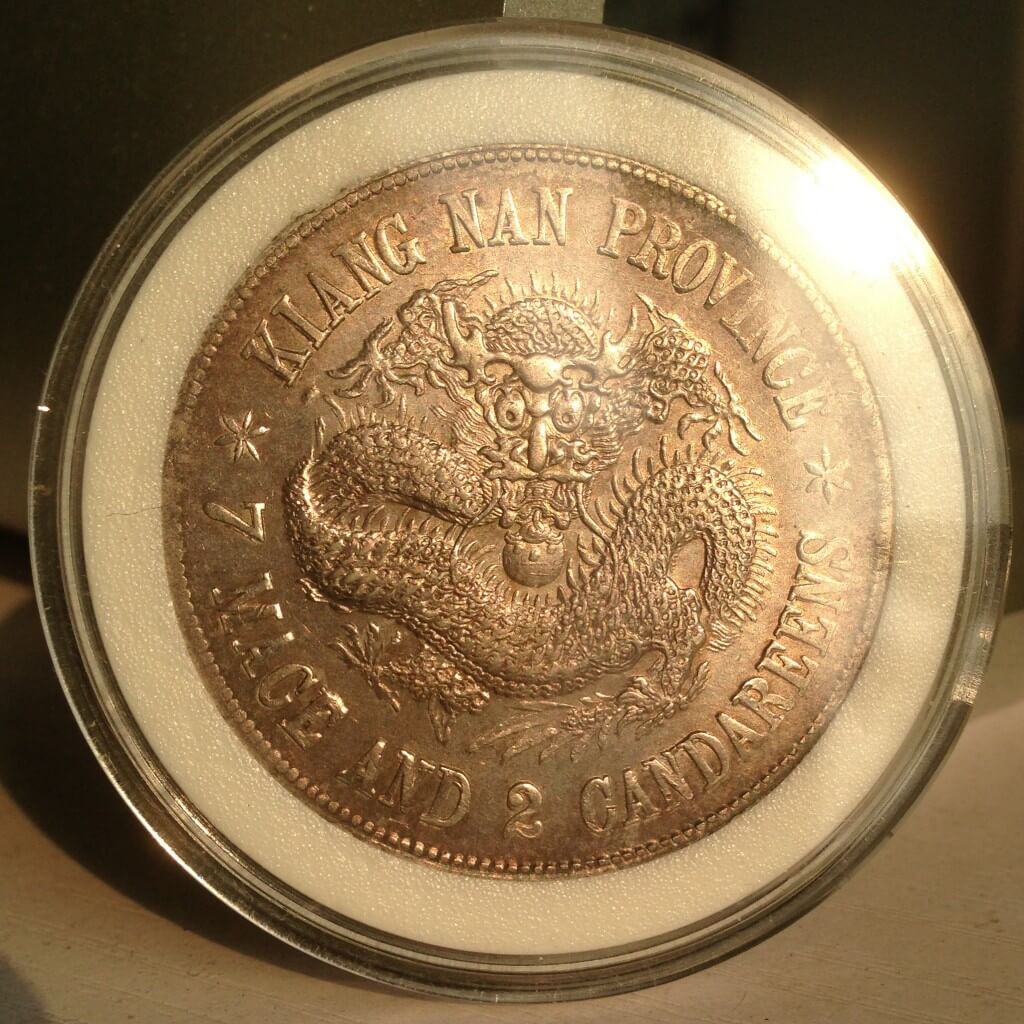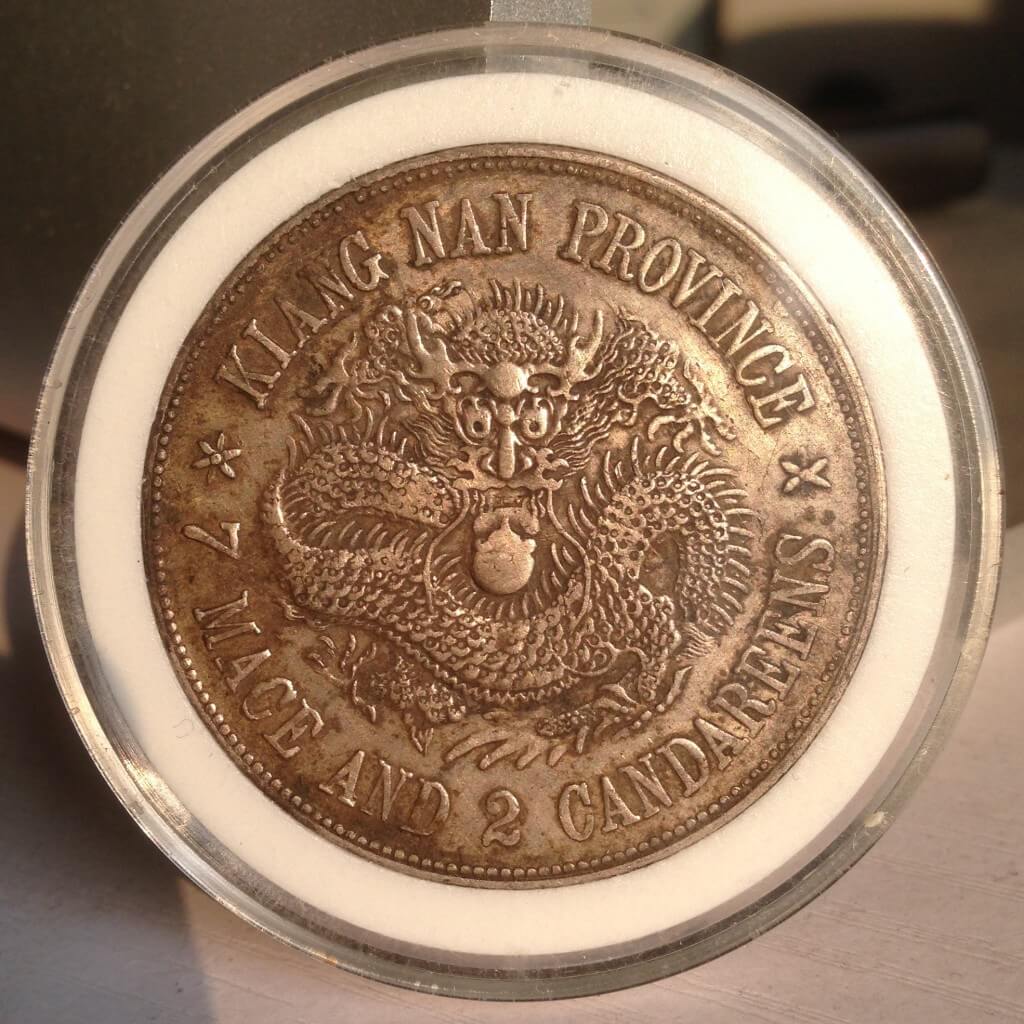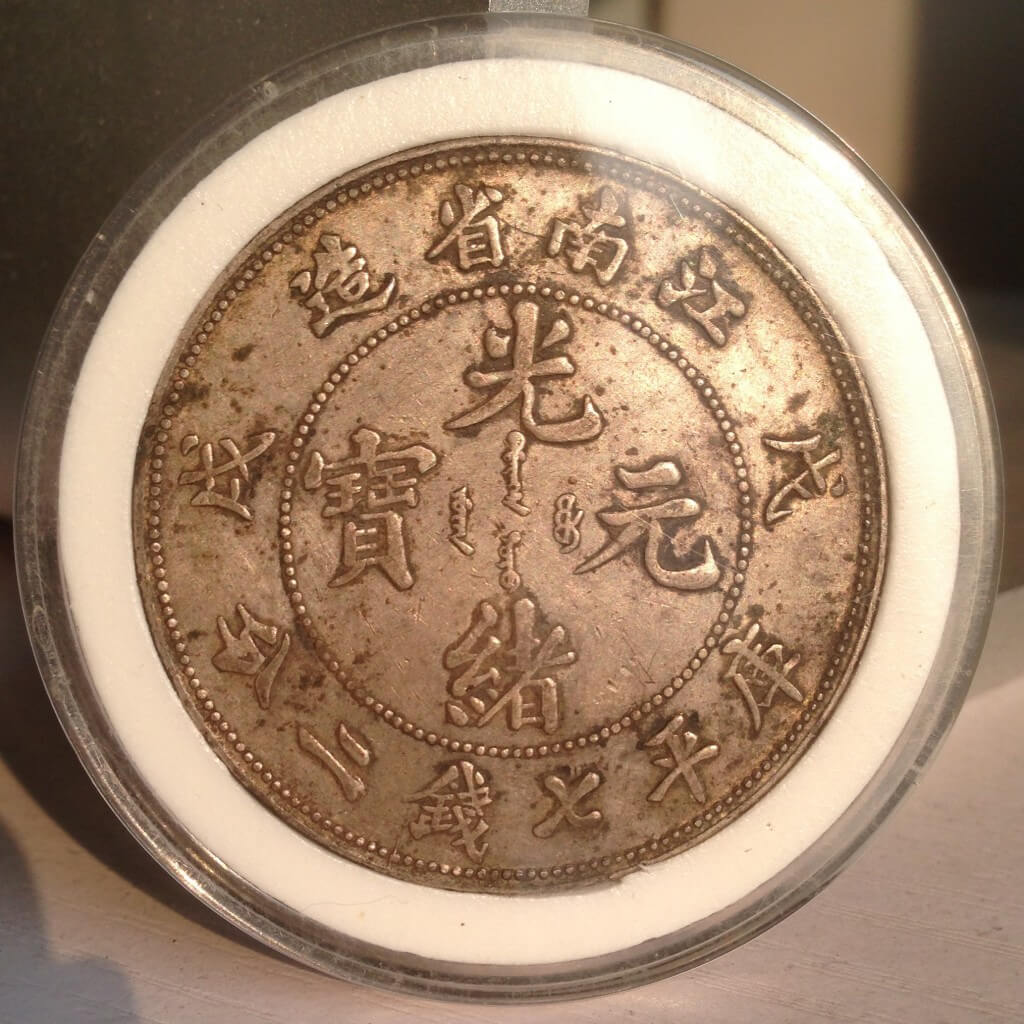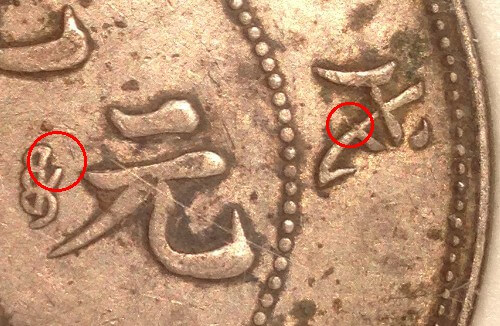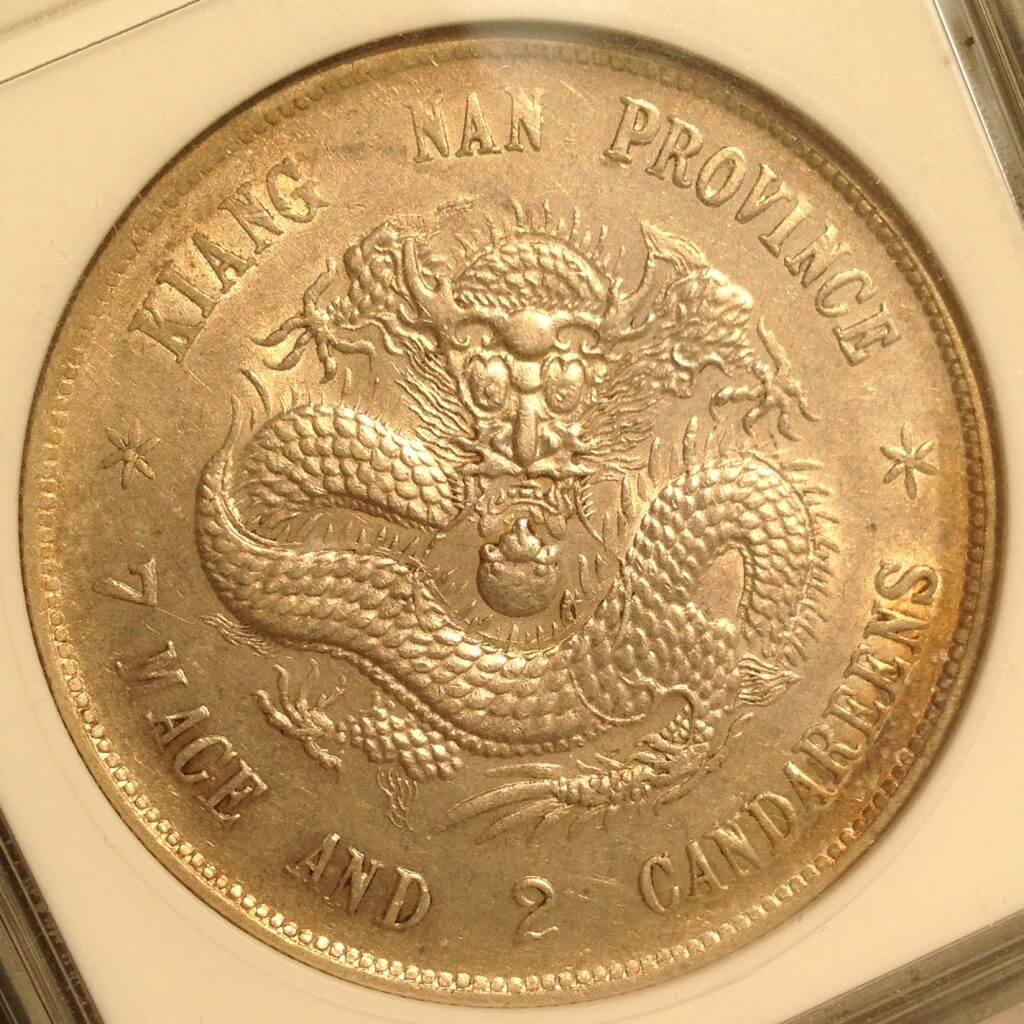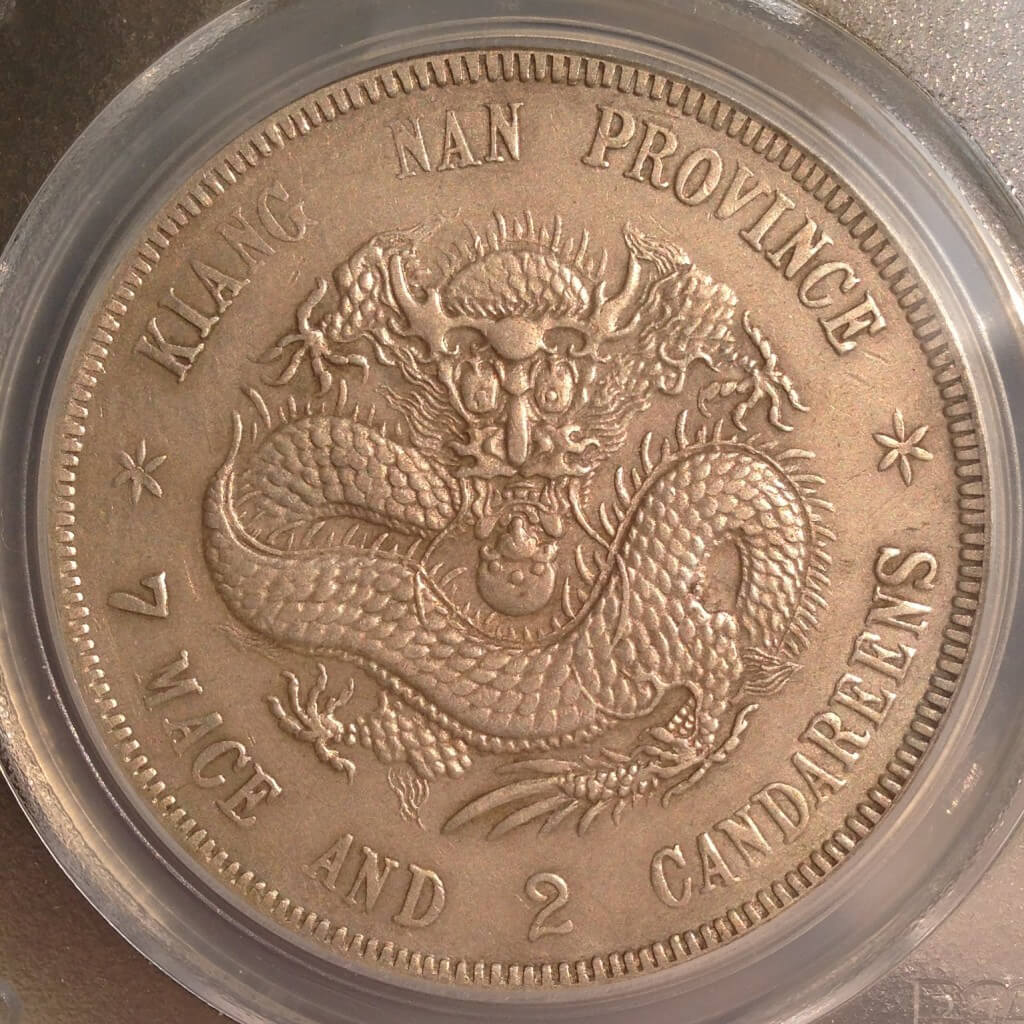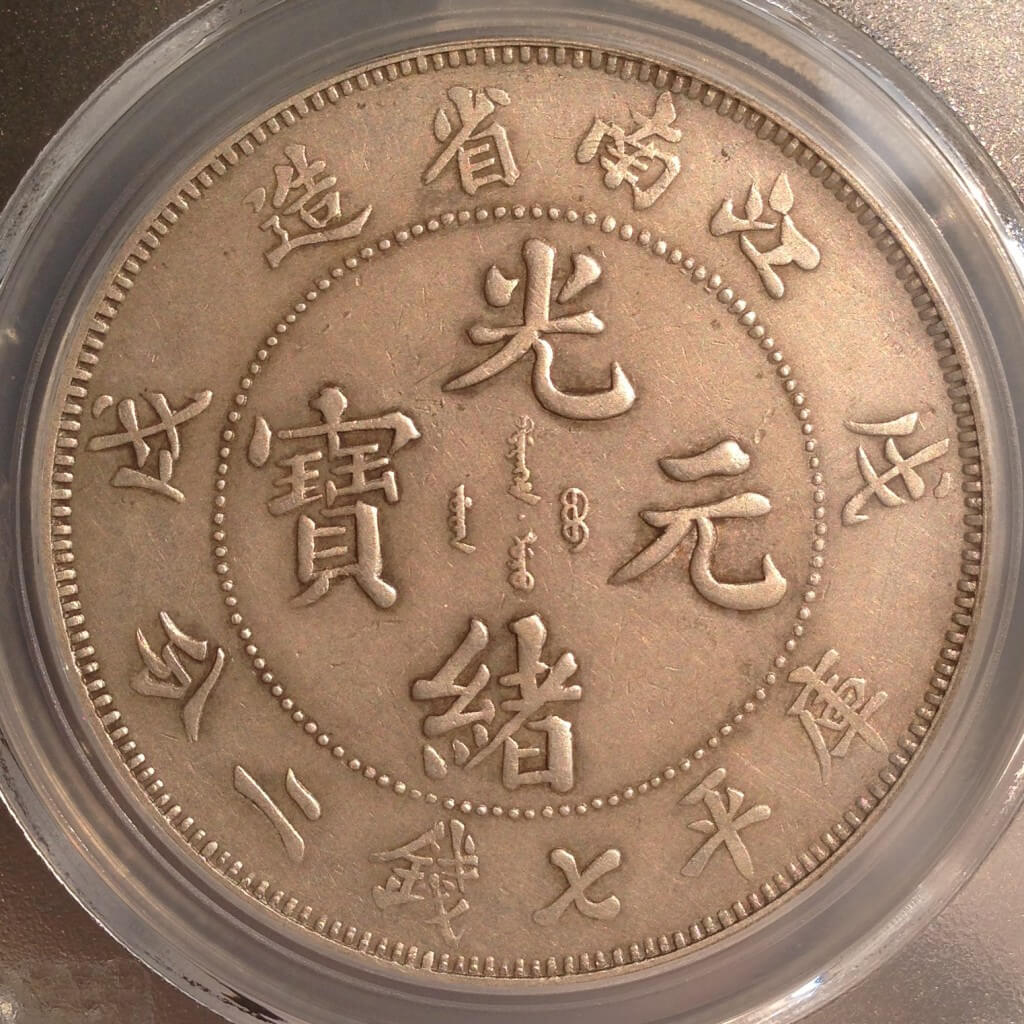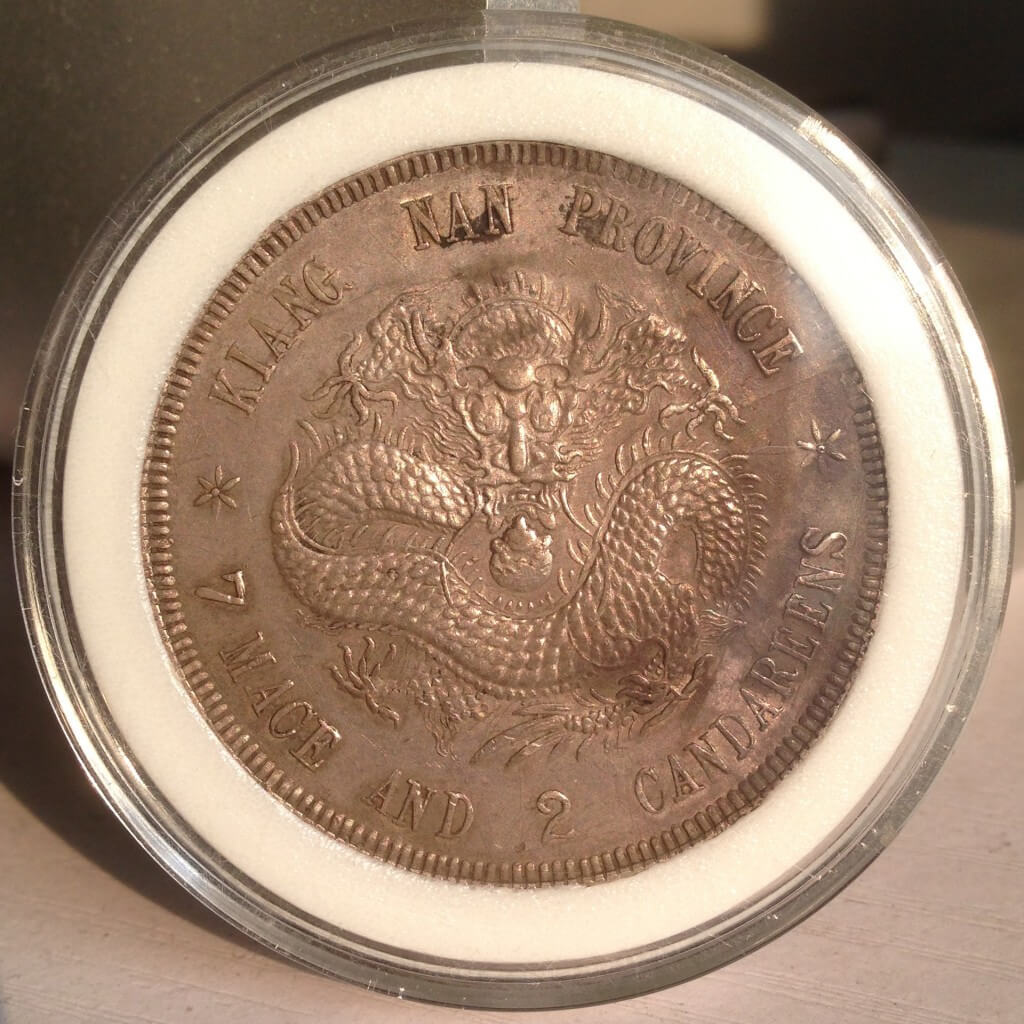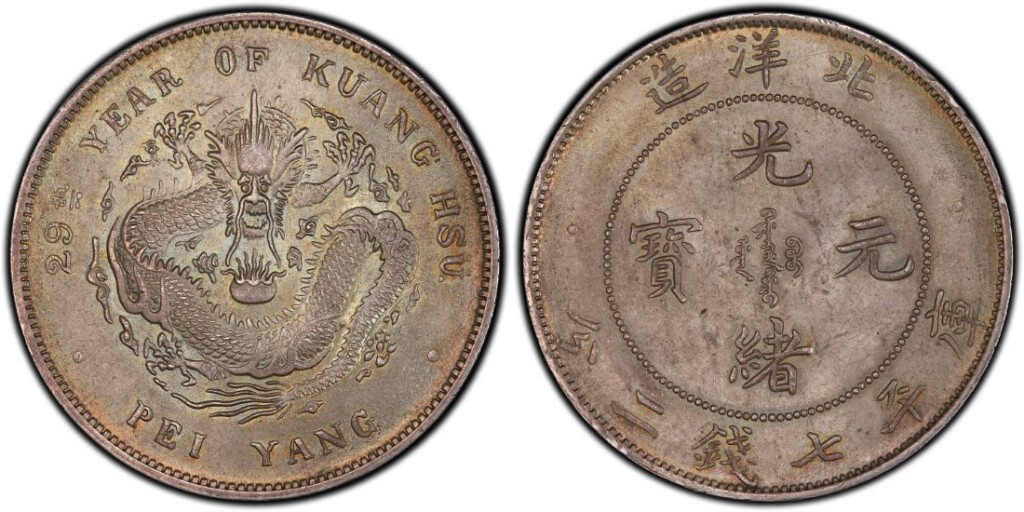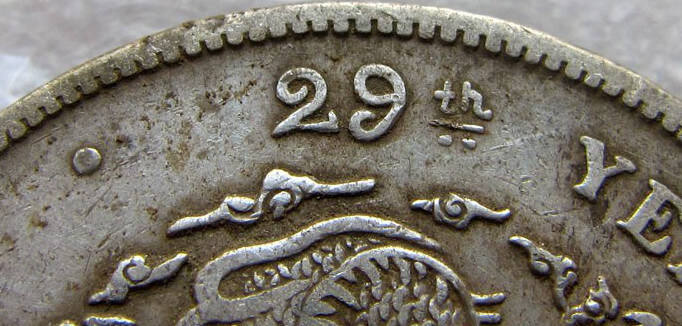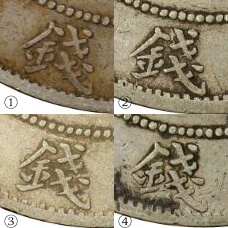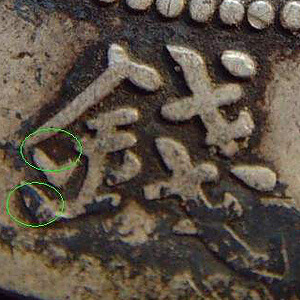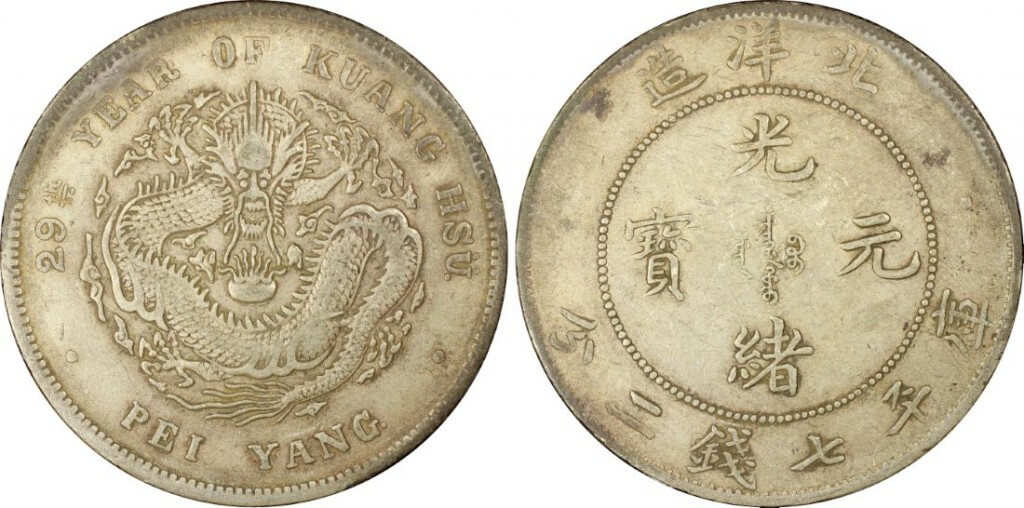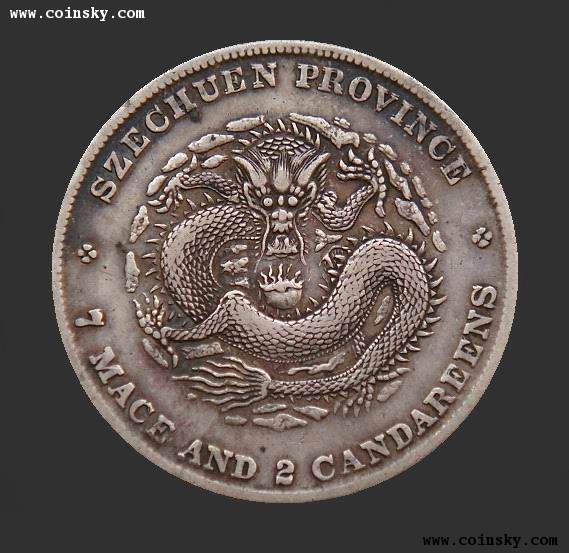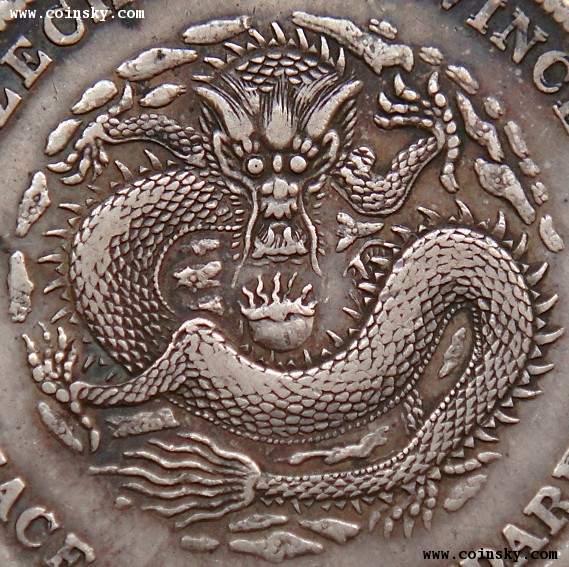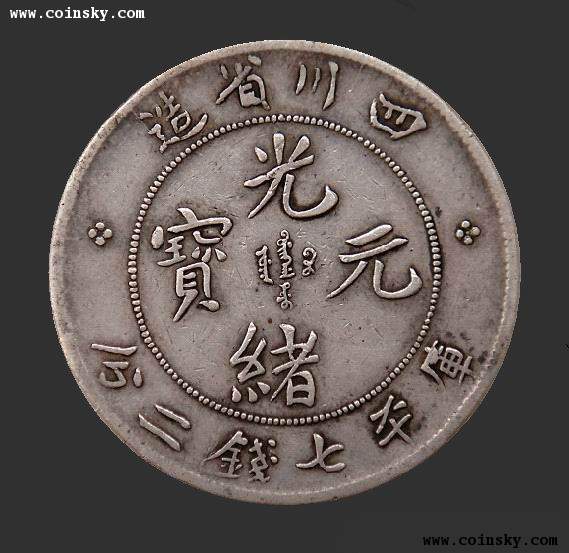Basking in the diffuse light of the Beijing sky, five beauties from the Kiangnan province are quietly witnessing the end of another day. Everything under the setting sun is suddenly tinged with a nostalgic golden colour.
This glistening “Circlet-like scales” dragon is a rare breed. The doubled die turned its armour into a chainmail, delicately adorned with pearls. Below the K of Kiangnan Province, a lonely cloud has been struck in silver. The 江南戊戌珍珠龙K下多云 is an extremely rare variety, especially that well preserved. Most of the known specimen have already been worn down by a century of turmoil.
Collectors often wish coins could talk. This dragon would still be unable to tell them what it went through: he never had a tongue to begin with. His body covered in pearls is but skin and bones, meager and bristled with longer spines. The 江南戊戌长毛无舌珍珠龙 is a war-weary survivor, but it is still more easy to find than its cloudy cousin. This specimen hides more distinctive features on its back:
The rightmost Manchu character is broken, like the handle of a battered teapot. The “戊” character is also missing a stroke, left forever unfinished:
This particular combination of scars is uncommon; other coins of this type were usually struck with a complete date and Manchu inscriptions. The dragons with pearl scales are especially rare and beautiful, but other remarkable varieties were made the same year.
Endowed with a luxurious beard, the 江南戊戌大胡子龙 is a very popular variety amongst Chinese coins collectors. It is especially hard to catch one with all its exuberant pilosity left intact despite the passage of time.
The darting glance of its silver irides and the dot on its reverse are easily identifiable: this is a 江南戊戌凸眼龙满文中心点, a famous and desirable 1898 Kiangnan variety. However, it still has a subtle je ne sais quoi which makes it more pleasing to the eye than usual. After a while, the Chinese coins collector may realise that the dragon is framed within a circle of long denticles, conferring a unique harmony to the whole. While long denticles on the obverse are nice, long denticles on both sides are better:
Of course, this tasteful variety is extremely rare. There exists a similar “long denticles” variety for the last appearance of the Old Dragon, on the 1899 已亥 Kiangnan silver dollar:
Like the toning on this last Kiangnan dollar, the sky has already turned dark. Then all the charm is broken, and I leave the Kiangnan beauties to their contemplation.
The 1903 Chihli dollar (Y73.1) is much scarcer than its sister Chinese silver dollar, the famous Y73.2 made in 1908 (see related articles), but it is also somewhat less studied. Currently, only the variety with a full-stop after PEIYANG is acknowledged by grading agencies. There exists actually much more interesting and rare varieties, which are actively sought after in China. Similarly to the 1908 Chihli dollar, this 1903 dragon coin has been minted in several version with different typography for the date. The most dramatic is the 艺术字 (artistic font):
Besides the roman numerals, another device to examine carefully is the 錢 character on the reverse of the coin. On the full-stop after PEI YANG coins, the 金 part (radical) on the left of the 錢 character has been calligraphied in four different ways:
The picture 1 is representative of what you see on 90% of Y73.1 dragon dollars: this is the most common variety. The calligraphy shown on picture 3 is called 中折金 and is much scarcer: both side strokes of the 金 radical are curved in a very noticeable way. Even more rare, the 挑金 variety (picture 2) is easily identified by its incurved left stroke. The rarest of all the varieties is the 双折金, with characteristic vigorous tapered strokes on the side and bottom (see picture 4 and details).
If like me you collect Pei Yang 29th year Chinese silver dollars, be on the lookout for these rare varieties: while they enjoy some popularity in China, most collectors abroad are still unaware of them, so there is good opportunities around.
Navigating the more than 200 known varieties of the Szechuan dollar can be intimidating; the erudition required makes the Szechuen 7 mace and 2 candareens the darling of sophisticated Chinese coins collectors. As the number of advanced collectors increase and knowledge about the rarest varieties becomes more widespread, their value have dramatically increased in the past two years and Szechuan dollars in desirable condition have already all but vanished from the market. The Szechuan Narrow Face Dragon, with a doubled die error on the obverse (see below), is one of the hottest varieties.
I had mentionned in an earlier post that this type had even rarer subvarieties, one of which I recently acquired an interesting specimen graded by PCGS. At first glance, both coins look very similar. The gaunt dragon has the same ragged one-eyed face that makes its charm, the doubling on the English legend characteristic of this type is still there as well.
The difference is indeed on the reverse side of the coin (see below). The attentive reader will notice that the top the “庫” character on the reverse is very different, as if the brush of the calligrapher let out an ink blot drawing it. The bottom “省” character is also maculated with a similar silver ink blotch. The full name of this very rare variety is 剑毛龙无头车花心点粘笔庫, or literally “Sharp spines dragon with decapitated Chē, rosette with dot, and smudged Kù” in English; what a nice demonstration of the compactness and expressivity of the Chinese language!
The image of a gauche scribe making ink blots is more romantic than the hard, mechanical reality: this kind of filling is called a “die chip” error. Damage to a small portion of the die or weakness in its design can lead to raised, unstruck surfaces, which often manifest as plugged letters or dates. A more concise English name for this variety could therefore be “Narrow face dragon with doubled die on the obverse and die chip on the reverse”.
The die crack on the left of the 造 character on the reverse, present on both varieties, implies both types were struck from the same die. This means that the die chip error coins were minted last and their number is only a fraction of the total population for this variety. It is very likely indeed that this die was scrapped as soon as the mint found out that the coins were “stained” by the very silver ink blots that now make them unique and valuable…
